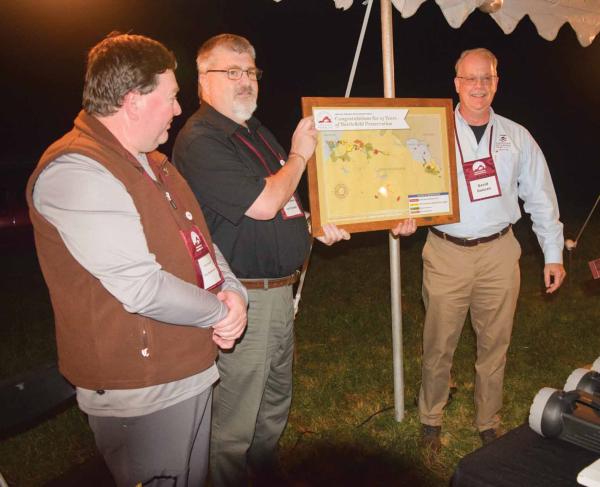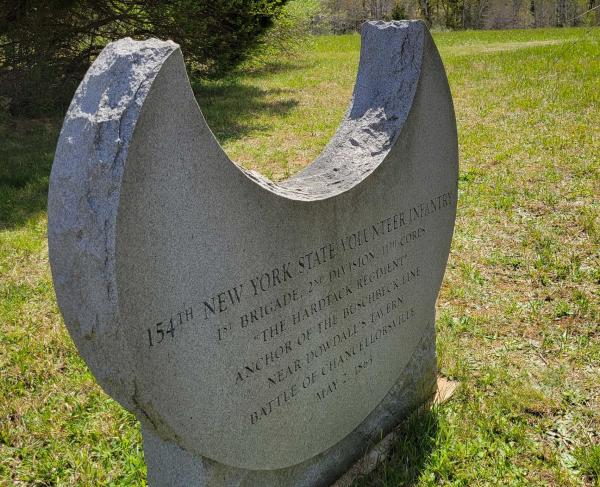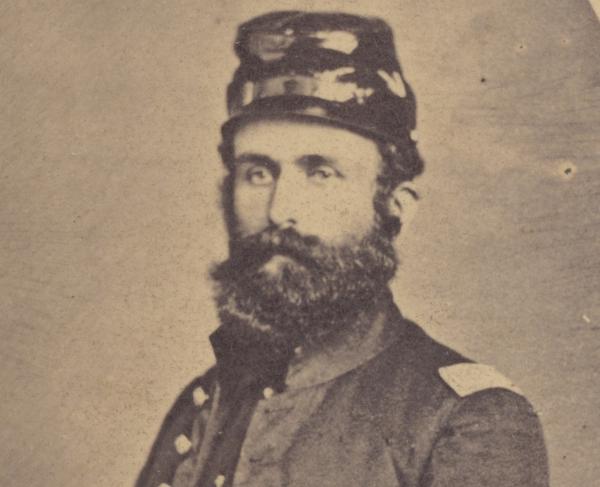10 Facts: Chancellorsville
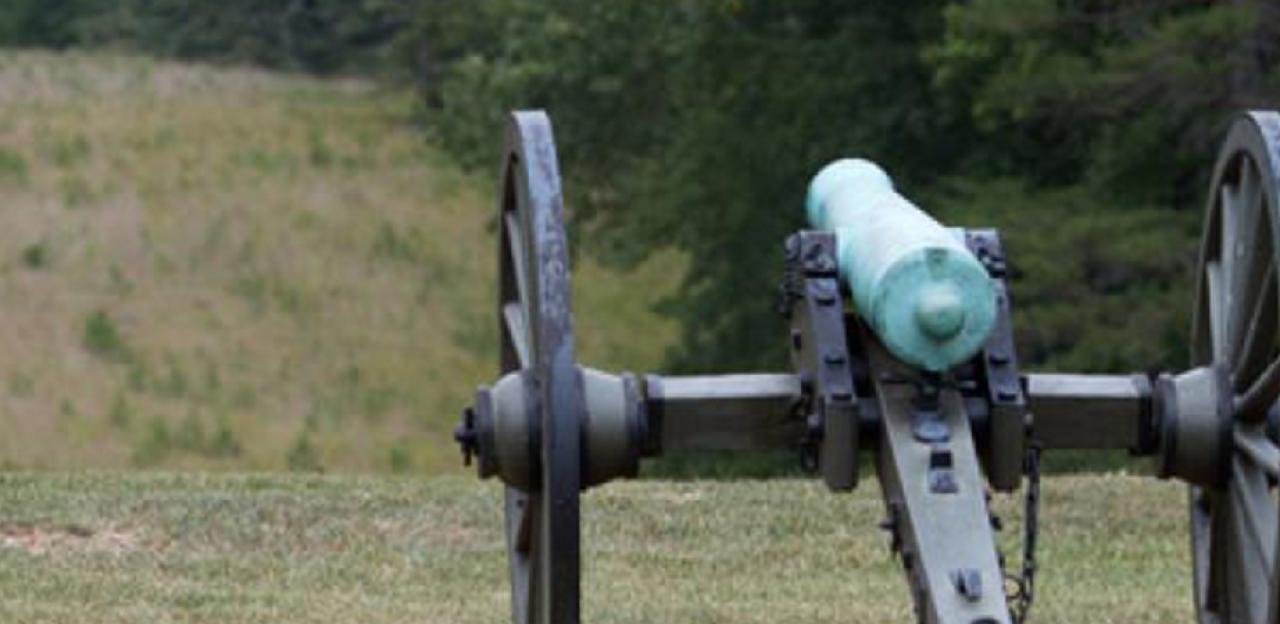
The Trust has been an active and aggressive partner in working to save and preserve key tracts at this endangered battlefield. To expand your appreciation for this battle and the preservation opportunity it presents, please consider these ten facts about the Battle of Chancellorsville.
Fact #1: At the Battle of Chancellorsville, Lee’s army faced its longest odds
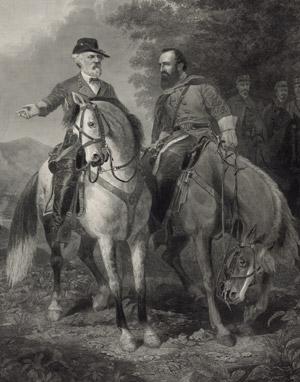
On April 30, 1863, Maj. Gen. Joseph “Fighting Joe” Hooker crossed the Rappahannock River and maneuvered part of his massive army onto the flank of Gen. Robert E. Lee’s Army of Northern Virginia. A strong contingent of Hooker’s army threatened the Confederate lines opposite Fredericksburg. Not only did the Federal force greatly outnumber the Confederates – roughly 130,000 to 60,000 – but the Army of the Potomac had been reorganized and revitalized by Joe Hooker over the preceding winter.
Robert E. Lee’s Army of Northern Virginia, constantly facing significant supply challenges, was fairly dispersed in the spring of 1863. Lee’s First Corps commander, Lt. Gen. James Longstreet, with roughly 15,000 veterans soldiers, were scavenging for food in the Suffolk, Virginia region and did not return to Lee until after the Battle of Chancellorsville.
Despite being outnumbered more than 2 to 1 and facing strong forces on both of his flanks, Robert E. Lee decided to take a far riskier path –attack this new massive foe and keep him at a disadvantage by fighting in the Wilderness of Virginia.
Fact #2: Despite Hooker’s successful flanking movement, Lee seized the initiative and held it for two full months
Hooker’s well-executed crossing of the Rappahannock led many senior Federal officers to believe that Lee’s only course of action was to retreat southwards towards Richmond. Maj. Gen. George Meade exclaimed “Hurrah for Old Joe. We’re on Lee’s flank and he doesn’t know it.”
With the bulk of his army safely positioned around the Chancellorsville crossroads, Hooker on May 1, 1863, moved eastward and out of the Wilderness. The ground to the east was far more open, affording the Federal army a better means to fully employ its significant numerical strength.
Before the Yankees could clear the woods, however, General Stonewall Jackson’s soldiers plowed into them on the Orange Turnpike. Jackson’s troops also appeared on the Union right flank and Hooker ordered a general retreat from this open ground after a sharp, brief battle. The First Day at Chancellorsville was a small action whose significance greatly exceeded its scale. The next day, deep within the tangled Wilderness, Hooker’s inert army failed to detect Lee’s bold plan to use the wooded roads to the south to maneuver a powerful column onto their right. On open ground, this kind of maneuver would have been impossible to execute.
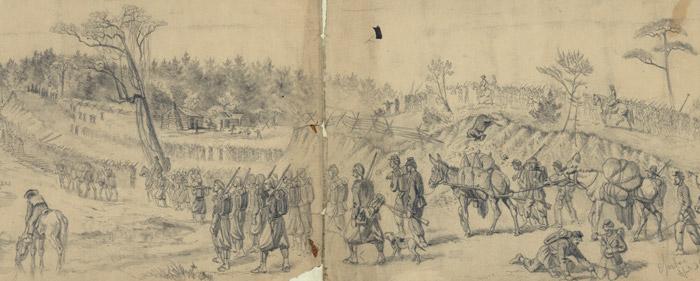
Fact #3: Lee broke a central maxim of warfare to achieve his famous victory at Chancellorsville
Carl von Clausewitz, in his famous military treatise On War, states that the “first principle [of warfare] is to act concentrated as much as possible.” Dividing one’s force in the face of a numerically superior enemy was considered to be a sure path to defeat.
After the first day’s sparring on May 1, 1863, Robert E. Lee and his trusted subordinate Thomas J. “Stonewall” Jackson met at a bivouac in the woods and devised one of the boldest actions of the entire Civil War. Jackson, with almost 30,000 men and 110 cannon, would march 12 miles and fall upon the Federal army’s right flank. During this maneuver, Jackson’s force would be isolated from the rest of Lee’s army. If Hooker’s army became aware of this division, Lee’s forces could face great peril.
In hindsight, we know that Jackson’s secret flank march was a tremendous success for the Confederates, but at the time it was a high stakes gamble that depended upon subterfuge and bluff.
Fact #4: The Federal Eleventh Corps, largely filled with German-Americans, was made into a scapegoat for the defeat at Chancellorsville
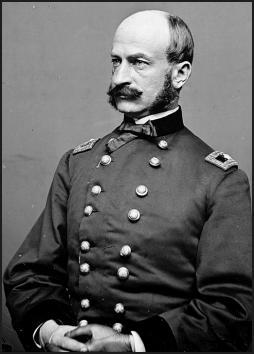
With Jackson’s 30,000 men now poised to unleash their attack, their primary target was the Union Eleventh Corps which was holding the far right of the Union position at Chancellorsville. Unaware of the looming danger on their flank, Maj. Gen. Oliver Otis Howard’s men were swiftly routed by the Confederates pouring out of the nearby woods.
The Union Eleventh Corps’ ranks were heavily populated by German-Americans and other recent European immigrants. Brigades within the corps were led by men with names like Schimmelfennig, Buschbeck, von Gilsa, and Kryzanowski.
In an Army of the Potomac which harbored general mistrust of “foreigners”, the routed Eleventh Corps became a convenient scapegoat for the overall defeat at Chancellorsville. But as noted Civil War historian Bob Krick highlights, “No corps in the army—or any army—could have stood up to the might of [Jackson’s] attack, combined as it was with overwhelming surprise, and coming from the worst possible tangent relative to their positions. They did not deserve calumny for the result…”
Unfortunately for “The Flying Dutchman” of the Eleventh Corps, their streak of bad luck would continue at Gettysburg on July 1, 1863. But after being reassigned to the Western Theater, many of these Chancellorsville veterans proved their fighting worth in the famous storming of Missionary Ridge in November of 1863 and on other famous fields.
Fact #5: Stonewall Jackson was wounded by his own men on the night of May 2, 1863
Guided by the light of a full moon, and eager to locate a new avenue of attack, Stonewall Jackson and eight other Confederate horsemen rode forward through the dense woods and thickets on the night of May 2, 1863. Returning towards the Confederate lines, Jackson’s party came under fire from men of the 18th North Carolina who were tired and on edge after a long day of marching and combat. Despite being at extreme range of the 18th North Carolina’s smoothbore muskets, Stonewall Jackson was struck by three different round balls – one in his raised right hand, two others in his left arm.
During Jackson’s evacuation to the rear, his litter carriers, stumbling through the dark forest, dropped the general twice to the ground, further exacerbating Jackson’s loss of blood. Later that night, Jackson’s left arm was amputated and he was subsequently evacuated to Guinea Station where he died of pneumonia eight days later.
Despite Chancellorsville being one of the most brilliant Confederate victories of the entire Civil War, the loss of Stonewall Jackson proved to be a heavy blow to the fortunes of the Army of Northern Virginia.
Fact #6: The Union evacuation of Hazel Grove proved to be the key to Confederate victory on May 3, 1863
Despite the stunning blow delivered by Stonewall Jackson’s forces on May 2, 1863, the Union army remained the far larger force and it occupied many of the most strategic spots on the battlefield.
Among the most important, and often called the “key” to the Chancellorsville Battlefield was a high, open plateau named Hazel Grove. Hazel Grove, with its direct view of the Union positions at Fairview and Chancellorsville, was the perfect location for Confederate artillery looking to assail the very heart of the Federal position.
During the night of May 2, Col. Edward Porter Alexander of Georgia discovered Hazel Grove during an evening scouting mission. He persuaded acting corps commander, Maj. Gen. Jeb Stuart, to make its capture the first priority. At dawn on May 3rd, Confederates under the command of Brig. Gen. James J. Archer charged up the slope of Hazel Grove and captured four artillery pieces and roughly 100 men – this small Union force was already in the process of retreating from this important high ground, however. Hooker, inexplicably, had ordered the abandonment of this key position – a significant error for which he and his army would pay.
Employing the new system of artillery battalions—clustering batteries into larger groups— Alexander filled Hazel Grove with 30 cannons and turned them loose on Hooker's lines.
The sheer weight of artillery fire from Hazel Grove, coupled with more guns along the Orange Turnpike, was too much for the Union troops around the Chancellorsville clearing. The clearing was abandoned and Confederate troops and their hero, Robert E. Lee, rode into the clearing, victors of the day.
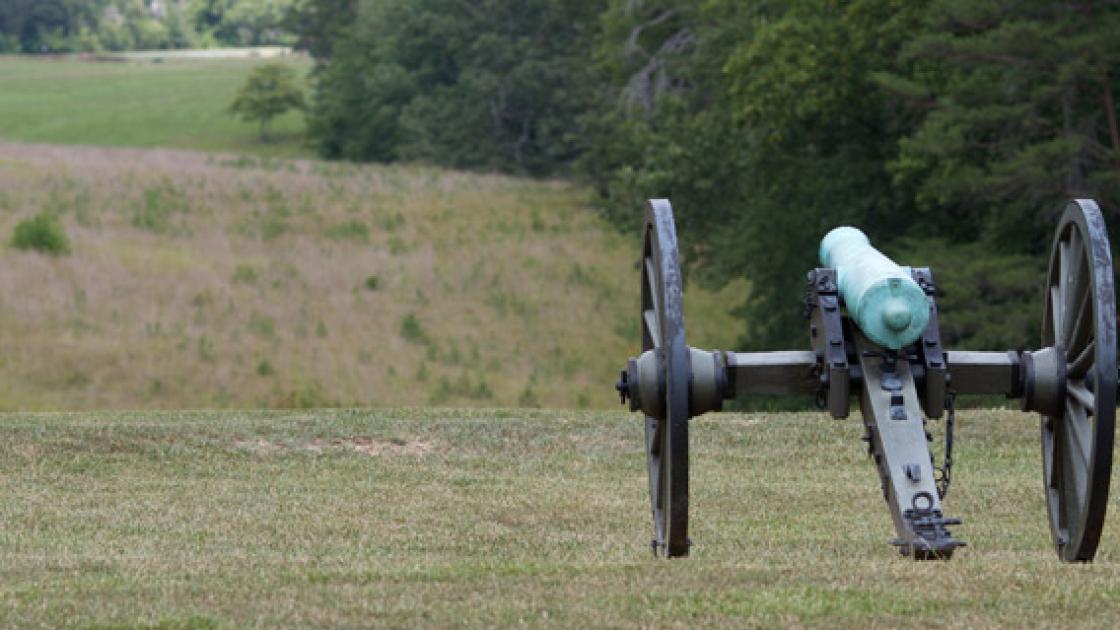
Fact #7: The Battle of Chancellorsville, at its time, was the bloodiest battle in American history
At its conclusion on May 6, 1863, the Battle of Chancellorsville became the bloodiest battle in American history. The 30,764 combined casualties eclipsed the losses suffered at well-known battles such as Shiloh (23,746), Second Manassas (22,180), Antietam (22,717), and Stones River (23,515).
By far the bloodiest day of the battle was May 3, 1863 when Lee’s Confederates were forced to attack a larger, now-alerted Union foe, largely positioned in prepared defenses. The aggressive fighting at places like Salem Church produced more casualties than the entire Battle of First Manassas (Bull Run).
Chancellorsville’s title of bloodiest battle in American history would be short-lived, however. From Chancellorsville, Lee began his journey towards Gettysburg and the epic fighting to come on July 1-3, 1863. But even at the end of the American Civil War, Chancellorsville was still ranked as the fourth bloodiest battle of the Civil War, after Gettysburg, Chickamauga, and Spotsylvania Courthouse.
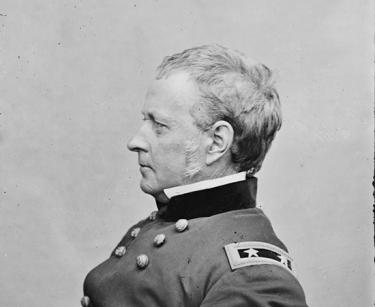
Fact #8: Joseph Hooker was the second consecutive commander of the Army of the Potomac to be relieved after just one major battle
After the debacle at Chancellorsville, Maj. Gen. Joseph Hooker pulled his Army of the Potomac back across the Rappahannock River. For the next month, the Rappahannock acted as the dividing line between the two opposing armies. But come June 1863, Lee and his Army of the Northern Virginia began its movement to the north and its eventual crossing into Maryland and Pennsylvania.
Concerned about Hooker’s poor showing at Chancellorsville, evidence of growing distrust in the Federal ranks, and tired of Hooker’s demands and complaints, President Abraham Lincoln accepted Joe Hooker’s resignation on June 28, 1863.
Like Generals Irvin McDowell, John Pope, and Ambrose Burnside before him, Joe Hooker’s tenure as the commander of the Army of the Potomac lasted only one major battle. Just three days before the fateful Battle of Gettysburg, Maj. Gen. George Meade was asked to take command.
Fact #9: The famous novel Red Badge of Courage is almost certainly based upon the Battle of Chancellorsville
In 1895, The Red Badge of Courage by Stephen Crane was published. Crane, who was born after the Civil War, reportedly used the Battle of Chancellorsville as his setting and drew on the accounts and stories of veterans from the 124th New York Volunteers – the “Orange Blossoms.” Many of the names of the characters and the sequences of the battle actions closely parallel the Battle of Chancellorsville.
Crane’s novel, which highlights the personal fears, hope, and human struggles of Private Fleming, became a popular best seller and has never been out of print since its publication. In 1951, a movie was made from the book and starred World War II hero Audie Murphy.
Fact #10: None of the battlefield land associated with Jackson's Flank Attack had been saved until the 1990s
It’s hard to believe that the portion of the Chancellorsville Battlefield most closely associated with Jackson’s famous flank attack was entirely unprotected all the way up to the 1990s. As fast moving urban development started to impact this once-rural region, the urgency to acquire and preserve this section of the battlefield dramatically increased.
The first tracts associated with this part of the battlefield were saved by the National Park Service in 1990 after a boundary expansion was approved. After that preservation groups like the Central Virginia Battlefield Trust and the Civil War Trust stepped in to acquire key tracts.
In 2009 the Civil War Trust made its biggest acquisition in this region when it acquired the 85-acre Wagner Tract. In 2013, the Civil War Trust successfully worked with the Central Virginia Battlefield Trust to save an additional 37 acres at Chancellorsville.
Significant portions of the Chancellorsville Battlefield remain unprotected today.

Learn more: Chancellorsville
Related Battles
17,304
13,460
